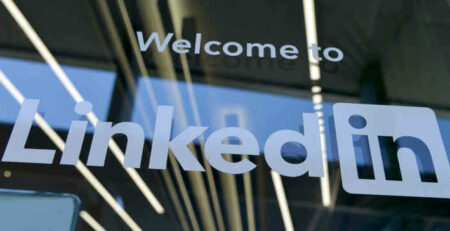10 Hottest Digital Marketing Trends in 2021
Business is continuing to transform with the leap to digital and marketing strategy is changing right along with it. Each year it seems creatives and other professionals are breaking new ground in customer outreach and advertising.
2021 has already seen some big changes in both methodology and strategy. Designing digital marketing campaigns may not look the same in a year, but there are some graphic design trends and marketing strategies that don’t appear to be going anywhere anytime soon.
Read on for the top digital marketing trends for 2021 so you can keep designing digital marketing campaigns that inform, delight, and persuade customers.
Digital Marketing Strategy
We’ve seen a huge expansion of marketing across digital channels ever since the advent of consumer-grade smartphones and computers. More recently, wearable tech and new smart technology have boosted that expansion even further.
Some companies and designers have taken a broad numbers-based approach, over-exerting themselves across all kinds of digital platforms to try and entice people to engage with their products. However, quality trumps quantity when it comes to marketing, especially with the huge number of advertisements the average person sees in a day.
As digital communication has become a tool for companies and people alike, users have become savvier. They are not as receptive to some of the old marketing methods. The buying public is more informed than it has been at any previous point and most of them understand the internet better than marketing professionals might.
But that doesn’t mean there isn’t still a huge role for digital marketing to play in 2021. Take a look at ten of the top digital marketing trends and design trends from this year to get some idea of how you can design campaigns for a smarter and more discerning public.
10 Top Digital Marketing Trends for 2021
Almost everything changed in the last year or so and the business world was no exception. From the remote work explosion to artificial intelligence increasing its foothold in the creative world, much of the old marketing rulebook has had to be altered or thrown out altogether.
Here are some of the top digital marketing trends and design trends from 2021.
1- Influencer Marketing
This trend might confuse the older crowd, but it’s no different from your standard celebrity spokesperson. The main difference is that influencers on social media and streaming sites appear to be famous for their advertising as much as for the content they create online.
Tackling the surge of influencer popularity has been challenging for some companies, but others have found a way to use it to their advantage. These younger streamers and posters can bring a new audience to some products. They’ve made a particular impact in the fashion and tech industries.
Gaming is another realm for influencers. In addition to individual careers, these influencers are also banding together to cross-promote and reach larger audiences. In many ways, they’re already doing their own marketing, so businesses that get in on this trend are in a great position to reach new potential customers.
Piercing the veil of the blogosphere is a challenge, but teaming up with influencers is a great way to accomplish the task without overstepping and appearing out of touch with the people you’re trying to reach. Be careful, though, because influencers may alienate some crowds while appealing to others. Personal problems and scandals have also occurred that have caused rifts between brands and these influencers.

2- Artificial Intelligence
AI is the new revolution across industries, but it’s reaching new levels when it comes to designing digital marketing campaigns. That doesn’t mean robots are coming to replace designers, but rather than they are making the most time-consuming parts of the designer’s job more streamlined and easier.
The continued upswell in user-centered design has created a whole lot of data. User research creates massive amounts of data points that would take human eyes ages to go over, let alone process and draw conclusions from. Luckily, AI can crunch numbers and group-related data fast.
New advances in artificial intelligence technology also allow it to make certain kinds of decisions and plan for the future. It can be used to automatically renew marketing drives or promotional emails, for instance. AI also can continuously take in data that is processed from users’ real interactions with both products and marketing material, such as clicks and other micro-conversions.
AI is certainly one of the most exciting new areas of technology. Enterprising marketing professionals have begun using it to make marketing more human and less formal. One of the main ways they’ve been able to implement that change is through chatbots.
3- Chatbots
If you’ve been to a digital shop or eCommerce website lately, you probably saw a chatbot. The current trend is to have a “message” automatically appear when you visit the webpage with a message that looks like someone has contacted you directly to help you.
Naturally, there is not a real person waiting to message each time someone visits the website. Rather, automation in the web design makes the message pop up. Depending on the site, users who reply to this message may be connected with a real person or an AI bot could answer their questions.
This human touch has made marketing more human, which is a huge benefit against the huge increase in digital interfaces, remote work, and a nearly constant focus on screens. People are more likely to respond and they can get quick responses to common questions compared to hotlines and FAQ pages.
Even if they aren’t single-handedly driving up sales, chatbots create a more caring and intuitive pathway for the user. People most likely know the bot isn’t a real person most of the time, but it’s still satisfying to have them as a resource for immediate problem-solving on one’s own.
There is a fine line between the usefulness of chatbots and the potential for them to be used as spam. Remember how it felt to be bombarded with pop-ups in the early days of the internet and strive to avoid that when you’re designing digital marketing campaigns that focus on or utilize chatbots.
4- Video Marketing
A hot new design trend is the inclusion of video sources rather than, or in addition to, more traditional text and picture designs. While the use of video for advertising purposes has been around since the invention of motion pictures, it’s taken on new life in the 21st century. On streaming sites, content creators are blending plugs and sponsorship mentions into their program natively.
Rather than having pop-ups or ad breaks, the host of the clip will take a break during the content to mention a product or company. That might sound like the last thing viewers want, but some content creators have gotten clever enough with their native ads that they are every bit as entertaining and funny as the original content.
Aside from streaming sites and content creators, businesses are using videos where walls of text and still images used to go. It’s gone far past the standard commercial. These videos are informative beyond the product they’re meant to sell and often have some entertainment value. In some cases, they may not mention any particular product at all or make a sales pitch of any kind.
Short videos entice the potential customer more than a wall of text. The production value and personality of the people in the video are generally more entertaining than simple text. That’s not to say text doesn’t still have its place when you need to deep dive into some detailed information, but the video is making inroads toward marketing that are novel in 2021.
5- Brand Purpose
Socially aware brands have been gaining popularity for some time now. With the unprecedented events of the last year, brands that care and do something to give back or improve society somehow are much more favored by customers than companies that are only after the bottom line.
Corporate grants, scholarships, and charity events are great ways to demonstrate a brand’s purpose. But the mission statement of the company should also reflect a desire to impact people’s lives in helpful and constructive ways.
For instance, a soft drink company wouldn’t want to have a professed mission to make tons of money or take the place of clean water for the majority of people’s beverage consumption. Beyond simple PR, the company’s branding would reflect the short-sightedness of these aims. Rather, many popular soft drinks highlight recycling and health initiatives.
Of course, no one would believe that a soft drink company genuinely got into the business of selling soda to benefit the environment and health. We know that businesses have a bottom line. But that doesn’t mean the enjoyment and betterment of people’s lives shouldn’t be at the core of the business mission statement.
Establishing a brand purpose should be done as early as possible in either the founding of a company or the branding and rebranding of a product or line of products. That way the messaging is clear from the start and the purpose of the brand comes across as more authentic to viewers and potential customers.
6- Content Marketing for SEO
The public is more informed than ever and it appears to have only made the search for quality information even more of a priority. In previous decades, websites would have very little information on them besides the name of the company, product lines, and contact pages. Now, companies want to have informative guides related to their trade to not only establish their authority on their industry but also to create more informed and discerning customers.
Google and other search engines are driving the growing popularity of blogs and product guides. Search engine optimization (SEO) is the practice of tailoring the content on a website so that it will appear earlier in search results. People are not always looking to buy when they perform an internet search, but if your company is the one who can provide what they were looking for, the result could be a macro-conversion.
Content marketing also drives new desires for potential customers. If you have an outdoor equipment company, you likely have people coming to the site for tents and sleeping bags. But if you can use content to demonstrate why they should invest in other gear like lamps or cooking stoves, they could add a few more items to the shopping cart before they checkout.
7- Shoppable Posts & Social Commerce
Social media is constantly transforming to accomplish new business goals. One of the most recent and likely to endure well into the future is social commerce and shoppable posts. Big social media sites like Instagram have recently rolled out new features that allow users of the sight to select things they like and buy them from retailers without leaving the original social media site.
On occasion, this might be supported impulse purchases, but it also saves tons of time for the buyer and removes obstacles in platform switching that could discourage them from completing a purchase or force them to abandon the search for the item altogether.
Shoppable posts also work for 3rd party sites like eBay and peer-to-peer trade and sales platforms. Websites that don’t yet have a function that allows people to complete purchases without leaving the original site are likely to implement them soon. Users by and large find these shoppable posts incredibly useful. They could be the breath of fresh air that social media needs to keep its hold on the attention of the general public.
8- Omnichannel Marketing
Giving a great customer experience on a single platform is no longer enough. As people include wearable tech and mobile devices in their internet usage, they expect a more integrated and seamless brand experience. That means the people in charge of designing digital marketing campaigns need to ensure that the recipients of brand messaging can continue making micro-conversions without interruption across platforms and channels.
Sending out discount coupons via email is nice, but it’s even nicer if the user can open the app straight from the email, store the coupon in a personal wallet, search inventory, and either order it for delivery or in-store pickup without having to change devices. Interruptions make it more likely that potential customers will abandon the pursuit of a product.
Omnichannel marketing should also include comparatively older tech like phone calls, SMS, and in-store functionality. SMS updates, subscriptions via messaging platforms like Viber or WhatsApp, and the ability to search wider inventory on an app when users are in the store are all great ways to immerse users in an experience they’ll love. This encourages brand loyalty and repeat customers.
9- Augmented & Virtual Reality
Virtual reality has yet to make the impact some sci-fi movies predicted, but it’s well on its way. Augmented reality has been implemented to great success by apparel companies and apps that provide directions. Even some healthcare providers have been able to use augmented reality to demonstrate complicated topics to users and customers.
While it still has a long way to go before it’s everyday technology, the relative novelty of augmented reality gives it an outsized impact. That’s likely to shrink as people get used to seeing it around more often, but even once its unique novelty wears off, AR is still a great way to show people information quickly.
10- User-Generated Content
Another tactic used by social media companies is a focus on content that’s created by the users themselves. Rather than receiving messages created by famous models and far-away corporate professionals, users can see themselves on the sites they love.
For example, hashtags have been used to great effect to bring users into marketing campaigns. People are more than willing to post pictures of themselves using products, which is both an advertisement and a product review wrapped into one.

Conclusion:
Digital marketing is still a fairly new concept for many people and companies. It’s grown considerably in 2021 and shows every sign of continuing on an innovative path.
New technology like augmented reality and virtual reality are giving users more access to users than ever before. Artificial intelligence is streamlining the UX design process and helping marketing creatives tailor campaigns and promotional materials toward more specific targets.
2021 holds lots of promise for marketing professionals. Use the design trends and marketing innovations in this guide to make sure your marketing stays on the cutting edge.












